#rememberthis
During the Holocaust: Eleonora Sbornik, née Hecht was born in April 1945, in Auschwitz following the liberation of the camp. Her mother, Agnes was deported to the camp on November 3, 1944, with her daughter, Eva, and husband, Imrich. She was a few months pregnant with Eleonora. Her father died in Melk, a Mauthausen subcamp.
After the Holocaust: Eleonora’s mother returned to Trenčín with her two young daughters after the war. Eleonora studied medicine and became a specialist in internal medicine. She has a son and lives in Germany.
#rememberthis
Before the war: Elizabeth Nussbaum, née Weiss was born in August 1927, in Szerencz, Hungary.
During the Holocaust: The family was expelled from their hometown and moved to a ghetto in Sátoraljaújhely. The family was then deported to Auschwitz-Birkenau. Her family, her parents and her six brothers and sisters were murdered in the camp in May 1944. After three months, she was transported to Dachau. She was liberated there by U.S. troops on April 29, 1945.
After the Holocaust: Elizabeth married a fellow survivor after they met in a displaced persons camp in Italy. They stayed there for three years and had their first child before moving to Kansas City in 1948. They had four children together, grandchildren and great-grandchildren.

#rememberthis
Before the war: Ella Blumenthal was born in Warsaw, Poland, in July 1921. She was one of seven siblings.
During the Holocaust: In October 1940, as a teenager, she was moved into the Warsaw ghetto. She took part in the Warsaw Ghetto Uprising. After, she was deported to Majdanek in 1943 and then to Auschwitz. Later, in November 1944, she was deported to Bergen-Belsen, where she was eventually liberated on April 15, 1945. Ella lost her entire immediate family except for a niece.
After the Holocaust: After liberation, Ella traveled back to Poland in search of family. She lived in Paris and Tel Aviv before marrying a South African and moving to Johannesburg. She lives in Cape Town and has four children, eleven grandchildren, and nine great-grandchildren.
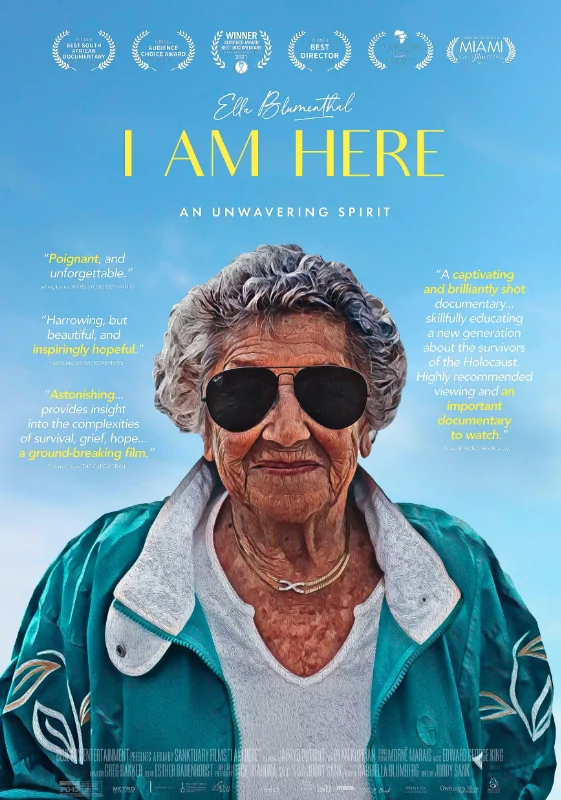
Learn more about I Am Here, the Film about Ella’s life.
#rememberthis
Before the war: Ella Revai née Ella Kircz was born in 1924 in Cigánd, Hungary. She recalls attending school with Christian children and that Jewish families had good relationships with their neighbors.
During the Holocaust: On April 16, 1944, Ella was rounded up in her school and taken to the Sátoraljaújhely ghetto three days later. After spending a month in the ghetto, Ella and her father, along with the other Jews from her hometown, were sent to Auschwitz on May 25, 1944. They arrived at the death camp three days later. Six months later, Ella was transferred to Horneburg, a concentration camp in Germany, where she was forced to do hard labor. With the bombings in Hamburg, Ella was again transported to different camps, Porta Westfalica and Fallersleben. She was finally liberated in Salzwedel on April 14, 1945.
After the Holocaust: Ella learned that her entire family perished. She returned to Hungary but eventually settled in Toronto.
Before the war: Erzsébet Fehérvári, née Erzsébet Fischer, was born in Budapest in April 1926. She was a typist and stenographer.
During the Holocaust: In 1944, at the age of 18, she took a job in Újpest. In July 1944, she and her father were deported. She was sent to Auschwitz and then to a labor camp near Bergen-Belsen. She was liberated by the British on April 18, 1945. Her father did not survive the Holocaust.
After the Holocaust: After returning home, she worked as an administrator for a few years at the Electrical Works and later, until her retirement, at the Hungarian Radio. She now has 2 sons 2 grandchildren, 5 great-grandchildren and 1 great-great-grandchildren.
#rememberthis
Before the war: Esther Friedman was born in 1929, daughter to Moshe Szpatner and Rachel née Zeisler-Gliksman of Brzesko. When the war broke out, she was 10 years old.
During the Holocaust: In March 1943, she was transferred to Kraków-Płaszów. In October 1944, after the liquidation of the Płaszów concentration camp, she was transferred to Auschwitz-Birkenau. In Auschwitz, her age was falsified from 12 to 15 so that she could survive selection. She and her mother were sent on a death march to Ravensbrück and later to the Malchów concentration camp.
After the Holocaust: In 1948, they remaining family moved to Israel.
#rememberthis
Before the war: Esther Sénot was born in January 1928, in Kozienice, Poland. She, her parents and six siblings moved to Paris in 1930.
During the Holocaust: Esther’s parents and some of her siblings were arrested in July 1942 during the Vel’ d’Hiv round-up. She was arrested at a police checkpoint on August 25, 1943, at 15 years old, and sent to the Drancy internment camp. In September, she was sent to Auschwitz on convoy 59. During that selection, 106 women were selected for forced labor. In Auschwitz, Esther’s sister was sent to the infirmary and later to the gas chambers. After 17 months, Esther was evacuated from Auschwitz to Bergen-Belsen and forced on a death march. She was liberated on May 5, 1945, in the Mauthausen camp and expatriated to Paris.
After the Holocaust: Esther was one of two of the 106 women who survived Auschwitz. After returning to Paris, she met her husband. They have three children, six grandchildren and many great-grandchildren.
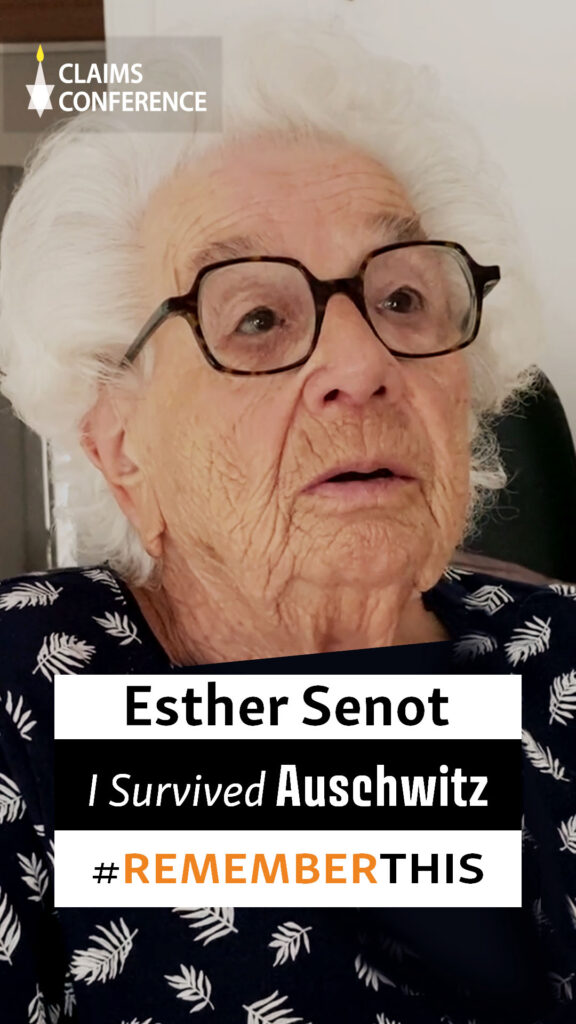
#rememberthis
Before the war: Eva Gerhardová, neé Haarová, was born in February 1929 in Bratislava, Czechoslovakia. Her family owned a hat boutique. Eva’s mother passed away when she was only 12 years old.
During the Holocaust: Despite deportations and bombings in Bratislava, Eva stayed in her hometown. After the Slovak National Uprising that began on August 29, 1944, she was deported to a concentration camp together with her brother and grandmother. Her father miraculously managed to escape when he jumped onto a moving tram. However, the rest of the family traveled through Sereď to Auschwitz, where Eva lost her brother and grandma. Eva was only 15. She was sent to work in a factory in Freiberg and was liberated in Mauthausen, where she was transferred to.
After the Holocaust: When Eva arrived back home after liberation in May 1945, her father did not recognize her. She was back at school and returned to her family’s boutique. Eva and her husband emigrated to Israel and then the United States.
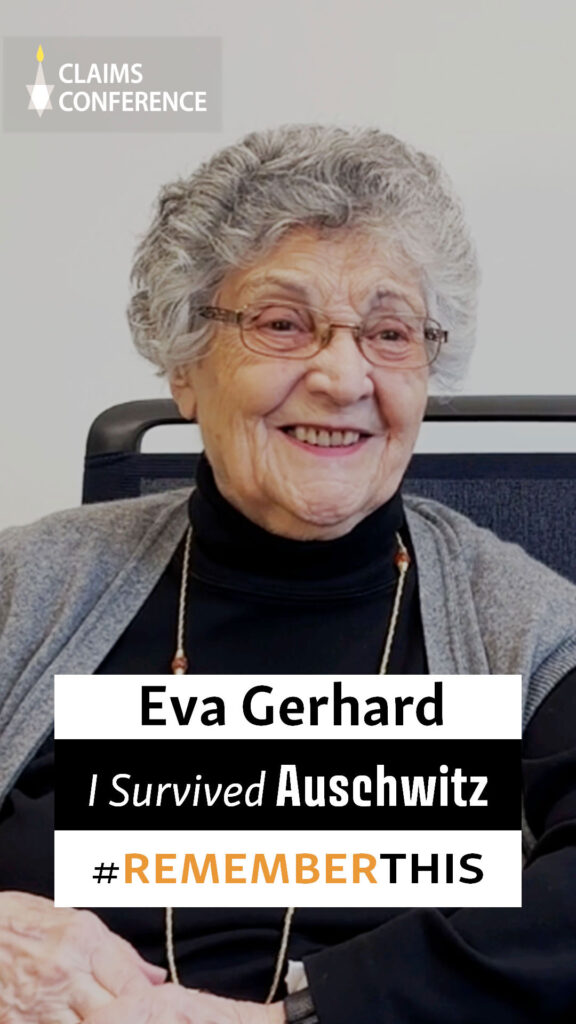
#rememberthis
Before the war: Éva Diamant, now Eva Szepesi, was born in Budapest in September 1932. Her father, Karol, ran a men’s fashion store.
During the Holocaust: In 1941, Eva’s father was deported to the occupied Soviet Union for forced labor and reported missing in 1942. At 11, she and her aunt fled through forests to Slovakia, but she was captured in the home she was hiding in. Eva arrived in Auschwitz on November 3, 1944, at the age of 12. Her mother and younger brother were also deported to Auschwitz on the last deportation and murdered. She was liberated on January 27, 1945, from the camp.
After the Holocaust: After liberation, Eva returned to Budapest and lived with her aunt and uncle. During the Hungarian Revolution, Eva and her husband left for Germany. In 2011, she published her autobiography, A Girl Alone on the Run. In April 2017, Szepesi received the city of Frankfurt’s Main Badge of Honor.
#rememberthis
During the Holocaust: Eva Umlauf, née Hecht was born in December 1942 in Nováky, Slovakia in a labor camp for Jews. An almost two-year-old Eva and her parents arrived in Auschwitz on November 3, 1944. As a baby, she was tattooed number A-26959. Luckily, the gassing of prisoners ceased that same month. Imrich died in Melk, a Mauthausen subcamp but Eva and her pregnant mother Agnes were liberated from Auschwitz on January 27, 1945. Her sister, Eleonora, was born in the camp infirmary.
After the Holocaust: Agnes and her two daughters returned to Slovakia after the war. Eva studied medicine in Bratislava and later resettled in Germany. She went on to have a practice as a pediatrician and psychotherapist. She has three sons.
#rememberthis
Before the war: Gabriel Bénichou was born in December 1926 in Tlemcen, Algeria.
During the Holocaust: In April 1943, Gabriel was arrested in Marseille and interned at the Drancy camp. He was then deported to Auschwitz-Birkenau in July 1943. After the Warsaw ghetto uprising, Gabriel was sent to clean up the ghetto. With the approaching Allies, he was sent on a death march to Koutno and eventually transported to Dachau, then sent on a second death march to Kaufering and Landsberg before being liberated from Bad Tölz by American forces in May 1945.
After the Holocaust: Gabriel married Hilda, and they had two children, seven grandchildren, and 16 great-grandchildren. He now lives in Paris, France.
#rememberthis
Before the war: Ginette Kolinka, née Cherkasky was born in Paris, France in February 1925. She was one of seven children, the youngest of the six girls.
During the Holocaust: With the German occupation of primarily northern France in 1940, Ginette and her family eventually moved to the south of France. However, in March 1944, someone denounced her, her father, and her brother. They were held prisoner before their relocation to Drancy internment camp. Later, on April 13, 1944, they were deported to Auschwitz. Her father and brother were immediately killed. After six months in the camp, Ginette was deported to the Bergen-Belsen concentration camp, then to Raguhn and then finally to Theresienstadt, which the Red Army already liberated.
After the Holocaust: Ginette was repatriated to France in June 1945 when she discovered her mother and sisters lived in Paris. She married Albert Kolinka in 1951, and they became market traders.
#rememberthis
Before the war: Gita Budinski, née Dretler was born in January 1930 in Rozavlea, Romania. She was raised with two sisters.
During the Holocaust: In March 1944, Gita is sent to the Sighet ghetto before being deported to Auschwitz the following month. Upon arrival, she lost her mother in the crowd. She and her sister Rosa were selected for work in a field, then digging roads and trenches. Gita was also sent to Mauthausen. Her sisters also survived the Holocaust.
After the Holocaust: After the war, Gita travelled to Israel by ship and currently resides in Rishon Lezion, Israel.
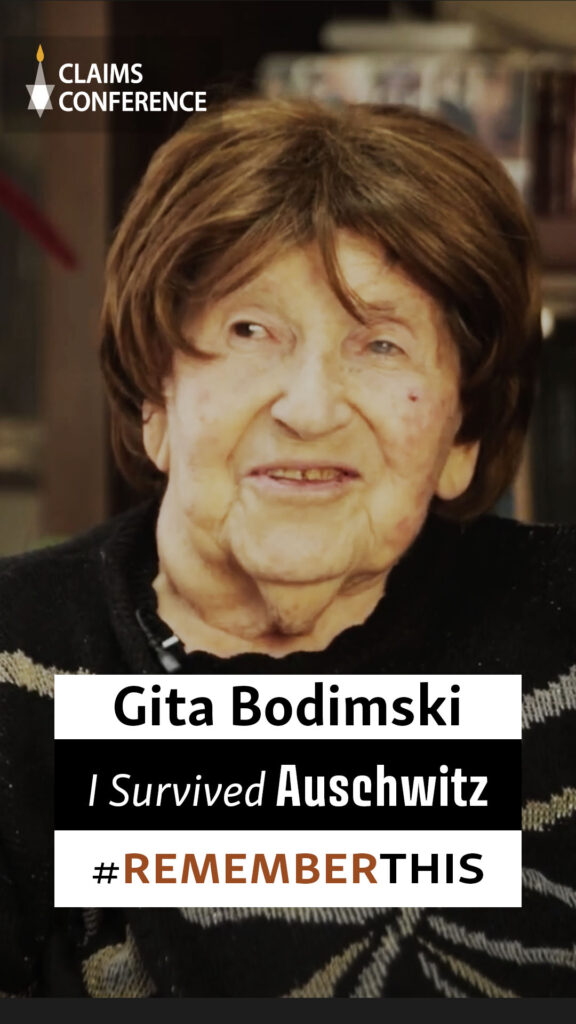
#rememberthis
Before the war: Goldie (Golda) Szachter was born in 1931 in Bodzentyn, Poland. She was the youngest of five.
During the Holocaust: With the German invasion of Poland in 1939, the Nazis moved Goldie and her family into a ghetto. Before the ghetto’s liquidation, Goldie’s father arranged for a gentile woman to take her in and pretend to be a Catholic girl. Once denounced, Goldie’s father smuggled her into the slave labor camp where the rest of her family worked. When the Nazis closed the camp, all the workers were sent to Auschwitz in July 1944. Her father and brother were murdered on the train to the camp. After the camp’s evacuation, Goldie and her family were sent on a death march to Bergen-Belsen. British troops liberated them on April 15, 1945.
After the Holocaust: Goldie’s mother died a few weeks after liberation. She published her memoir, The Last Selection: A Child’s Journey Through the Holocaust, in 1991.
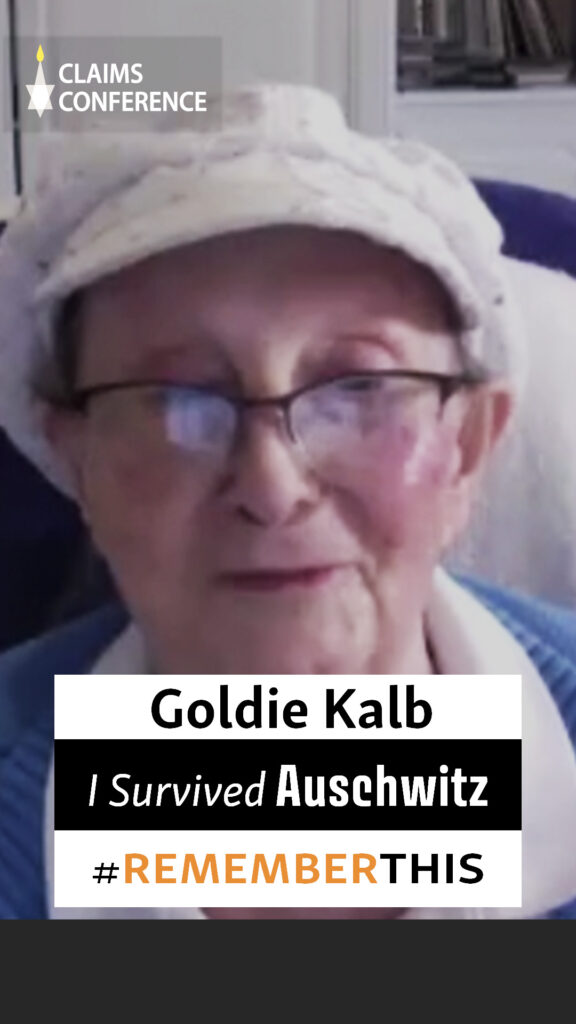
Add caption
#rememberthis
Before the war: Gyula Markovics was born in January 1926, in Sátoraljaújhely, Hungary.
During the Holocaust: Gyula was moved into the ghetto in his hometown and later deported to Auschwitz with his family in June 1944. He was forced to work in Neu-Dachs, a coal mine and subcamp of Auschwitz until liberation on January 22, 1945.
After the Holocaust: It would be months until Gyula would be picked up by his sister and return to Hungary. He now lives in Budapest.
↑top
All content ⒸConference on Jewish Material Claims Against Germany (Claims Conference)